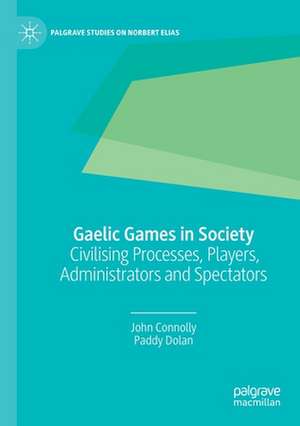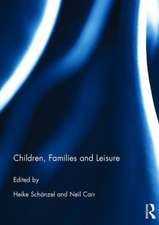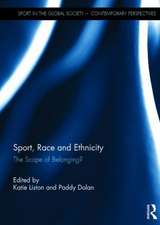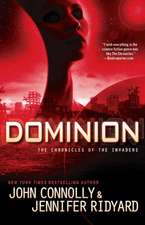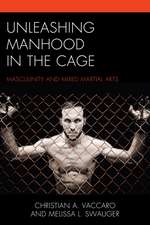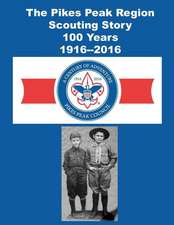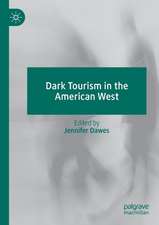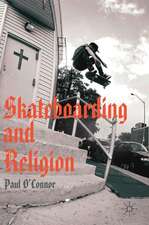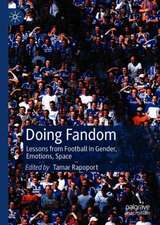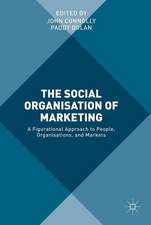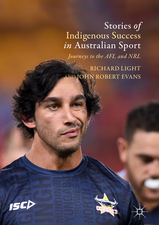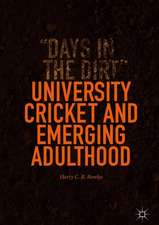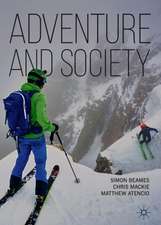Gaelic Games in Society: Civilising Processes, Players, Administrators and Spectators: Palgrave Studies on Norbert Elias
Autor John Connolly, Paddy Dolanen Limba Engleză Paperback – 9 ian 2021
| Toate formatele și edițiile | Preț | Express |
|---|---|---|
| Paperback (1) | 579.02 lei 43-57 zile | |
| Springer International Publishing – 9 ian 2021 | 579.02 lei 43-57 zile | |
| Hardback (1) | 587.85 lei 43-57 zile | |
| Springer International Publishing – 17 dec 2019 | 587.85 lei 43-57 zile |
Preț: 579.02 lei
Preț vechi: 681.20 lei
-15% Nou
Puncte Express: 869
Preț estimativ în valută:
110.83€ • 120.43$ • 93.16£
110.83€ • 120.43$ • 93.16£
Carte tipărită la comandă
Livrare economică 21 aprilie-05 mai
Preluare comenzi: 021 569.72.76
Specificații
ISBN-13: 9783030317010
ISBN-10: 3030317013
Pagini: 213
Ilustrații: XV, 213 p. 1 illus. in color.
Dimensiuni: 148 x 210 x 18 mm
Greutate: 0.28 kg
Ediția:1st ed. 2020
Editura: Springer International Publishing
Colecția Palgrave Macmillan
Seria Palgrave Studies on Norbert Elias
Locul publicării:Cham, Switzerland
ISBN-10: 3030317013
Pagini: 213
Ilustrații: XV, 213 p. 1 illus. in color.
Dimensiuni: 148 x 210 x 18 mm
Greutate: 0.28 kg
Ediția:1st ed. 2020
Editura: Springer International Publishing
Colecția Palgrave Macmillan
Seria Palgrave Studies on Norbert Elias
Locul publicării:Cham, Switzerland
Cuprins
List of Abbreviations.-Preface.- Chapter 1: Introduction: Gaelic games in society.- Chapter 2: Gaelic games and player violence.- Chapter 3: Spectators, emotions and the individualisation of violence.- Chapter 4: The sociogenesis and development of the GAA: Centralising and decentralising tensions.- Chapter 5: The amateur-professional tension balance.- Chapter 6: The amplifying of professionalism and amateurism, and the emergence of 'Player Power'.-Chapter 7: Integrating Irish youth, national identification, and diminishing displays of superiority.- Chapter 8: Cultural hybridisation as an essentialising strategy: The development of a new sport -- International Rules Football.- Chapter 9: Conclusion: Some thoughts on contemporary developments.
Notă biografică
John Connolly is Senior Lecturer at Dublin City University, Ireland.
Paddy Dolan is Senior Lecturer in Sociology and Social Policy at Technological University Dublin, Ireland.
Paddy Dolan is Senior Lecturer in Sociology and Social Policy at Technological University Dublin, Ireland.
Textul de pe ultima copertă
‘Connolly and Dolan set Gaelic games in the context of the development of sport worldwide, including trends towards less violence among players and spectators. Yet they also show how the GAA has been tied up with power relations within Irish society, between players and administrators, and in rivalry with soccer and rugby. A model of sociological history.’
—Stephen Mennell, Professor Emeritus of Sociology, University College Dublin, Ireland
‘Connolly and Dolan draw on a wealth of historical documents and skilfully employ key concepts in figurational sociology to analyse a range of developments in Gaelic games that have long been the subject of media and public interest and the focus of heated debate within the GAA.’ —Paul Darby, Reader in the Sociology of Sport, Ulster University, UK
‘Ireland is as central to our understanding of global sport as sport is to our understanding of both Irish society and the theories of Norbert Elias.Gaelic Games in Society is a critical synthesis of history and sociology and continues the rich tradition of figurational analyses of the development of particular sports. This fascinating work will sit comfortably alongside the best.’ —Dominic Malcolm, Reader in the Sociology of Sport, Loughborough University, UK
In this book John Connolly and Paddy Dolan illustrate and explain developments in Gaelic games, the Gaelic Athletic Association (GAA), and Irish society over the course of the last 150 years. The main themes in the book include: advances in the threshold of repugnance towards violence in the playing of Gaelic games, changes in the structure of spectator violence, diminishing displays of superiority towards the competing sports of soccer and rugby, the tension between decentralising and centralising processes, the movement in the balance between amateurism and professionalism, changes in the power balance between ‘elite’ players and administrators, and the difficulties in developing a new hybrid sport. The authors also explain how these developments were connected to various social processes including changes in the structure of Irish society and in the social habitus of people in Ireland.
—Stephen Mennell, Professor Emeritus of Sociology, University College Dublin, Ireland
‘Connolly and Dolan draw on a wealth of historical documents and skilfully employ key concepts in figurational sociology to analyse a range of developments in Gaelic games that have long been the subject of media and public interest and the focus of heated debate within the GAA.’ —Paul Darby, Reader in the Sociology of Sport, Ulster University, UK
‘Ireland is as central to our understanding of global sport as sport is to our understanding of both Irish society and the theories of Norbert Elias.Gaelic Games in Society is a critical synthesis of history and sociology and continues the rich tradition of figurational analyses of the development of particular sports. This fascinating work will sit comfortably alongside the best.’ —Dominic Malcolm, Reader in the Sociology of Sport, Loughborough University, UK
In this book John Connolly and Paddy Dolan illustrate and explain developments in Gaelic games, the Gaelic Athletic Association (GAA), and Irish society over the course of the last 150 years. The main themes in the book include: advances in the threshold of repugnance towards violence in the playing of Gaelic games, changes in the structure of spectator violence, diminishing displays of superiority towards the competing sports of soccer and rugby, the tension between decentralising and centralising processes, the movement in the balance between amateurism and professionalism, changes in the power balance between ‘elite’ players and administrators, and the difficulties in developing a new hybrid sport. The authors also explain how these developments were connected to various social processes including changes in the structure of Irish society and in the social habitus of people in Ireland.
Caracteristici
Presents the first sociological explanation on the development of the Gaelic Games and the Gaelic Athletic Association Illustrates and explains changes in violent behaviors amongst players and spectators, relating these transformations to Irish society more broadly Explores how structural changes in society are interwoven with changes in the GAA
